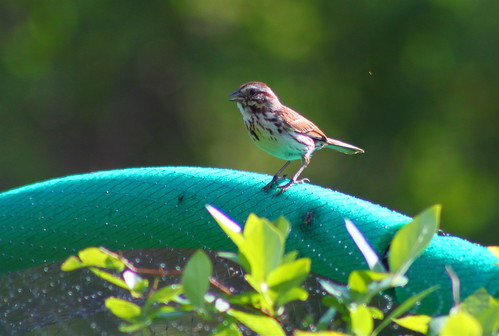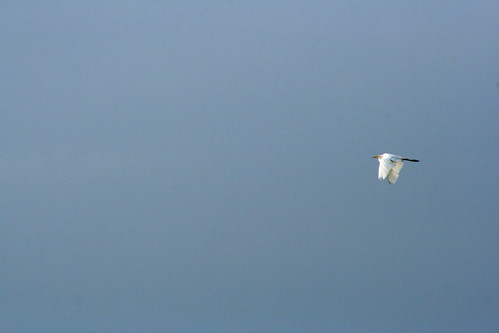The Great Blue Heron is the largest and most common Heron found in North America. They stand around 4 ft. tall and have a wingspan of 6 ft. They fly with slow deep wing beats. (a good quality for photographers!)
Great Blue Herons will eat many kinds of animals, including mice, but they prefer fish. Because of this, they will often be found along the edges of a body of water. They are considered to be expert fishers. One of the most interesting things about Great Blue Herons, is the way they catch their fish. They stand or move very slowly through the water until they see their prey, then they stab it with their long sharp bills. (I have only witnessed this a few times and ultimately hope to capture it with my camera someday). They then swallow the fish whole. Herons have been known to choke to death trying to swallow prey that is too large.
Great Blues nest in colonies, usually called Heron rookeries. They will often have a few trees with several different Heron families. Their nests are made of sticks and both sexes take turns incubating the eggs for 25-29 days. Since they are in such close proximity to other Herons, they do not defend their nesting territory, but are very territorial with their feeding areas.
I found a statement in a book entitled, Birding: The bestselling guide to the birds of North America, that I found humorous. “ If disturbed, the Great Blue takes off heavily and flies away with slow deep wing beats, often giving a deep, throaty call as it goes.” I find this funny because it is so true. I believe they hear me, even before I am aware of their presence. I always feel like they’re irritated that I disturbed them.
If you have never observed a Great Blue Heron in the Louisville area, you would be sure to see them at Falls of the Ohio during the summer. They love to fish in the shallow water on the fossil beds close to the dam.



 12:28 PM
12:28 PM





 Posted in:
Posted in: 













